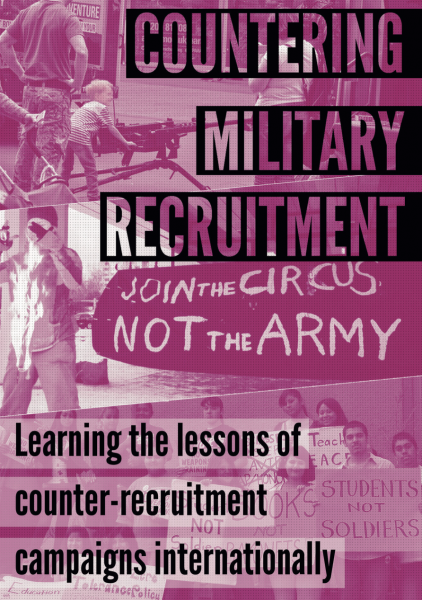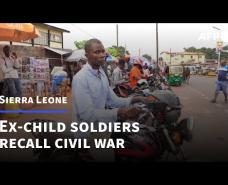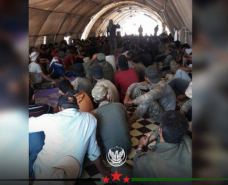Caught in the Crossfire: Child Soldiers in South Sudan Have Few Alternatives

In South Sudan, as in many parts of the world engulfed in conflict, youth are growing up in communities that have been torn apart by war. The film The Good Lie, which tells the story of the lost boys and girls of Sudan, vividly portrays their struggles during the Second Sudanese Civil War (1983-2005). Throughout the war, children were actively conscripted, both voluntarily and by force, into the national army and other armed groups. That legacy of recruiting child soldiers has continued into today’s conflict in South Sudan.
South Sudan’s independence in July 2011 was celebrated as the start of a new era – one of freedom, development, and opportunity. In the eight years that followed the signing of the Comprehensive Peace Agreement (CPA) in 2005, the number of child soldiers steadily declined. According to UNICEF, by late 2012, approximately 4,000 children had returned home. South Sudan has a young population -- 72 percent under the age of 30 by World Bank estimates -- and many have struggled with few opportunities for education or employment since independence. With the onset of renewed violence in December 2013, the conscription of child soldiers on once again on the rise. The United Nations estimates there are at least 9,000 child soldiers fighting in the current conflict.
The United Nations also estimates that there have been at least 50 targeted attacks on schools and over 6,000 children have gone missing since December. When opposition forces attacked Bentiu in January 2014, a group of armed men stormed into a classroom and gathered up the 300 boys belonging to the same ethnic group as forced conscripts. They were told that they needed to avenge the killing of their Nuer brothers and sisters in Juba. The rebel soldiers threatened to kill the families of those who initially refused. The children were taken to a military base for training, and as far as their parents know, their children have disappeared.
In June 2014, Lakes state’s military caretaker governor, Major-General Dhuol, ordered the forced recruitment of child soldiers from their communities. “Those chiefs who will fail to bring me their youth…will be sacked,” he commented. The opposition has also relied on child soldiers to fight. Opposition spokesperson Mabior Garang Mabior said that, "it's in the nature of war that children are caught up in the conflict, and sometimes have to fight.”
In a recent speech, acting Secretary General of the ruling Sudan People’s Liberation Movement (SPLM), noted that youth are central to the SPLM and have been disproportionally affected by violence. “It is clearly seen that youth fuel the war, but they are also the major victims. Youth are recruited in the army, and we’ve done that since 1983, but also they form the bulk of the rebel fighters – Yau Yau, and all those more than 90 percent of those who are fighting and dying on the front line are youth. And this is how the crisis affects you.”
Independent of the recent conflict, historical conflict in South Sudan primarily centers on cattle acquisition, particularly in Jonglei, Lakes, Warrap, and Eastern Equatoria states. Cattle are an important commodity in the local economy and represent wealth, power, and status in the community. Young men also have to pay a lofty bride price in cattle to marry. For some tribes, the number of cattle required could exceed $200-250 for a bride who is both beautiful and well educated.
As a show of fighting skill and strength, young men raid each other’s cattle, both from different clans of the same tribe, and between different tribes. But four decades of civil war, extreme poverty, and the proliferation of weapons and ammunition have contributed to the militarization of cattle raiding and the use of extreme forms of violence. The tradition has been turned upside down and cattle raids now target women and children, as well as the elderly in remote villages, rather than simply the cattle in the cattle camp. Rape, child abductions, and revenge attacks have ravaged rural communities in the years since independence.
In a youth survey conducted by Mercy Corp, one young man suggested that the youth have no role models. He explained they often look up to deceased war heroes as inspirational leaders, but that their political elites had not provided them with a vision for the country’s future, or their own. The survey suggests youth may resort to violence out of frustration. Young people feel “betrayed by everyone,” and harbor a sense of exclusion and disillusionment.
It is clear that a variety of programming on multiple levels is required to address violence among South Sudan’s youth and provide them with viable alternatives, including political participation, education, and employment. For now, a genuine peace agreement is needed as a first step to break the cycles of conflict and violence. Once a peace agreement is signed and implemented, progress can be made on reintegrating youth back into their communities and providing them with the rights and opportunities promised by independence.
Editor's note: Justine Fleischner and former Enough Project intern Irina Balytsky contributed to this post.
Photo credit: Lou Nuer cattle camp youth strike a pose for the camera in Uror country, Jonglei state, Justine Fleischner March 2013.
Source: Enough Project
Countering Military Recruitment

WRI's new booklet, Countering Military Recruitment: Learning the lessons of counter-recruitment campaigns internationally, is out now. The booklet includes examples of campaigning against youth militarisation across different countries with the contribution of grassroot activists.
You can order a paperback version here.








